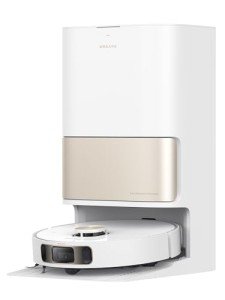What Is The Evolution Of Cleaning Robots
Revolutionizing Home Maintenance: The Rise of Cleaning Robots
In an age where innovation continues to influence daily life, cleaning robots have become a substantial development in the field of domestic cleaning. These autonomously functioning makers have redefined how households handle cleaning tasks, supplying benefit and efficiency. With their ability to navigate spaces, avoid barriers, and operate on pre-set schedules, cleaning robots are ending up being necessary tools for homeowners wanting to optimize both their time and their living environment.
The Evolution of Cleaning Robots
Cleaning robots have actually gone through a tremendous change because their inception. What began as rudimentary machines has progressed into advanced gadgets geared up with advanced features. Below is a table highlighting some crucial turning points in the development of cleaning robots.
Year
Milestone
Description
1996
First Commercial Robot
The first robotic vacuum, Electrolux's Trilobite, was introduced.
2002
Roomba Launch
iRobot launched the Roomba, making robotic vacuum cleaners popular.
2004
Mapping Technology Introduced
iRobot introduced smarter navigation abilities, enabling much better cleaning paths.
2012
Smartphone Integration
The introduction of mobile app control enabled users to control robots from another location.
2020
Advanced Sensors & & AI
Robots began using AI for improved mapping and things acknowledgment.
Types of Cleaning Robots
As innovation has actually advanced, various types of cleaning robots have surfaced, each created to cater to various cleaning requirements. A few of these include:
Robotic Vacuums
- Designed to autonomously vacuum floorings, they frequently include sensing units to navigate around spaces and go back to their charging stations.
Robotic Mops
- These robots are equipped with mopping functionality, using water or cleaning solutions to scrub floors.
Window Cleaning Robots
- Particularly crafted for window cleaning, these devices can climb up vertical surface areas utilizing suction or magnetic systems.
Swimming Pool Cleaning Robots
- Developed for in-ground pools, these robots gather particles and even scrub the walls of the pool efficiently.
Multi-tasking Robots
- Some modern-day cleaning robots integrate vacuuming and mopping capabilities, offering versatile cleaning solutions.
How Cleaning Robots Work
The core performance of cleaning robots is centered around their capability to browse homes autonomously while executing cleaning jobs. Here's a breakdown of the basic parts that allow them to perform effectively:
Sensors: Most cleaning robots are equipped with sensing units that help them detect obstacles, slopes, and edges, preventing falls and collisions.
Navigation Technology: Many robots use a mix of gyroscopes, accelerometers, and often cams or LIDAR for navigation. This allows them to map their environment and clean efficiently without missing spots.
Source of power: Most cleaning robots operate on rechargeable batteries, with lots of capable of returning to their charging docks when their power runs low.
Cleaning Mechanisms: Whether through suction for vacuuming or rotating brushes for mopping, cleaning robots include numerous mechanisms customized for efficient dirt removal.
Benefits of Cleaning Robots
The incorporation of cleaning robots in households provides several benefits:
Time-Saving: Cleaning robots can run on their own, permitting property owners to participate in other activities.
Constant Cleaning: With scheduled cleaning times, these robots guarantee constant maintenance of the home.
Hard-to-Reach Areas: Cleaning robots can access narrow spaces and corners that conventional cleaning tools might have problem with.
Reduced Allergens: Regular cleaning helps lessen dust and irritants, adding to a healthier living environment.
Limitations of Cleaning Robots
Despite their many advantages, cleaning robots likewise present specific restrictions that users need to consider:
High Initial Cost: While the price of cleaning robots has actually reduced in time, some sophisticated designs can be relatively costly.
Inconsistent Performance: Not all robots perform similarly; some might deal with particular surfaces or dirt types, resulting in unacceptable outcomes.
Minimal Capacity: Many robotic vacuums have smaller sized dustbin capabilities, requiring more frequent emptying than standard vacuum.
Frequently Asked Questions about Cleaning Robots
Q: Are cleaning robots worth the investment?A: Cleaning robots can be
a worthwhile investment for those seeking time-saving solutions. They can substantially relieve the cleaning problem, especially for busy households. Q: Can cleaning robots be programmed? robotic vacuum cleaner comparison : Yes, numerous cleaning robots come with programmable schedules and modes, enabling users to set specific cleaning times and locations. Q: How do I maintain my cleaning robot?A: Regular maintenance involves cleaning the brushes, emptying the dustbin, and occasionally looking for software updates. Q: Are cleaning robots efficient on all surfaces?A: Most robotic vacuums are effective on hard floorings and low-pile carpets. However, efficiency might
vary on thick carpets or specific kinds of carpets. Q: Do cleaning robots work well under furniture?A: Cleaning robots are created to fit under many furnishings; nevertheless, the efficiency can depend upon the height of the furniture.
**Cleaning robots represent an advancement in the world of
domestic tasks, using a mix of innovation, convenience, and effectiveness. While they are not a total replacement for standard
cleaning methods, they significantly enhance housekeeping capabilities. As advancements continue, future versions of these devices are expected to end up being much more intelligent, effective, and user-friendly, additional integrating into the smart homes of tomorrow. The modern-day homeowner hence deals with an exciting future where cleaning robots could take much of the drudgery out of home maintenance, enabling a cleaner living space with very little effort.  **
**